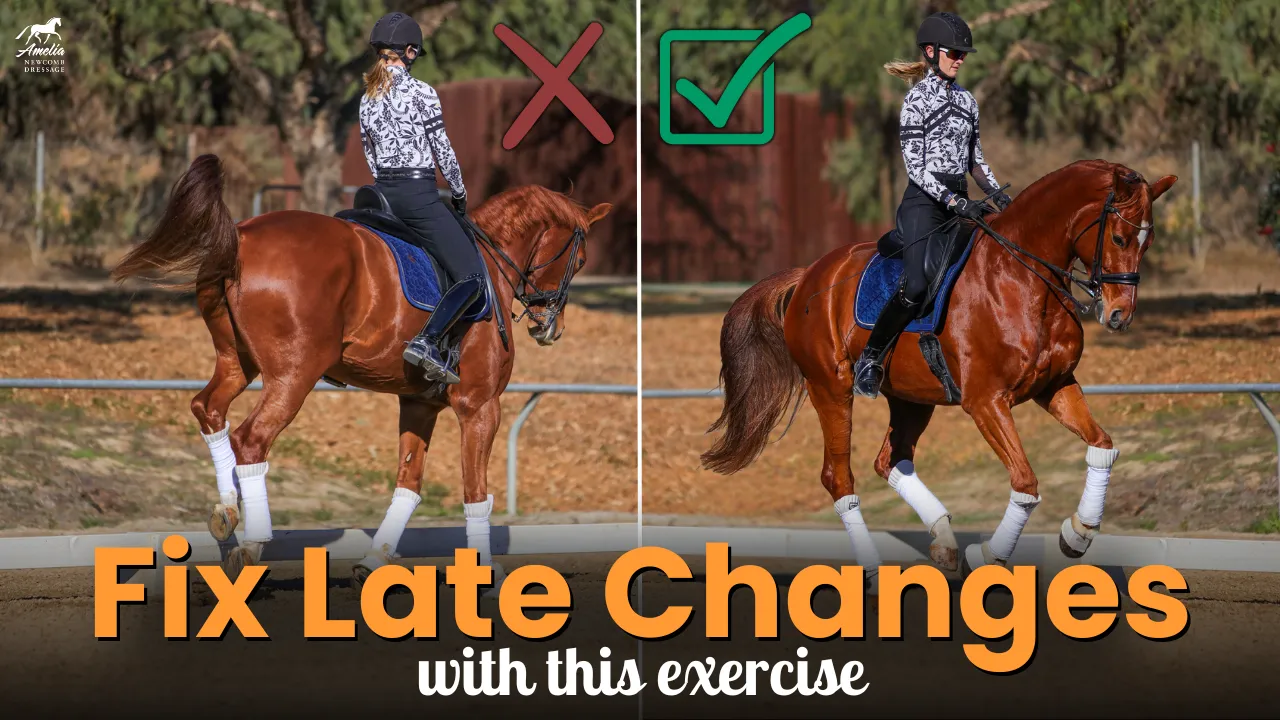Tempi changes are an essential aspect of advanced dressage, showcasing a horse’s balance, straightness, and responsiveness. Training them requires attention to detail, patience, and the use of strategic exercises to ensure quality and consistency. Here we’ll explore how to approach tempi changes and refine them with targeted exercises.
Foundation First: Preparing for Tempi Changes
Before beginning any movement, focus on the basics. Ensure your horse’s canter is balanced, rhythmic, and responsive. Evaluate your position: sit tall, keep your legs correctly aligned (inside leg at the girth and outside leg slightly behind), with even rein contact.
Start by practicing single flying changes to confirm your horse understands the aids and can perform them with straightness, suppleness, and most importantly: cleanly. A well-executed single change is the foundation for successful tempi changes.
Counting and Rhythm: The Key to Success
For tempi changes, timing is critical. The count depends on the type of changes you’re working on:
- Four-tempis: Count “1, 2, 3, change” and repeat.
- Three-tempis: Count “1, 2, change.”
- One-tempis: Simply think “change, change, change” without overemphasizing the count.
Maintaining the rhythm of the canter throughout the line is crucial. Avoid letting the horse speed up or slow down, as this disrupts the flow and increases the likelihood of mistakes. Use half-halts to regulate the tempo.
Exercises to Improve Tempi Changes
- On a Circle: Practicing tempi changes on a circle helps improve straightness and control.
- Start with a balanced canter and prepare for the change as you approach the curve.
- Ensure the horse stays on the circle line while executing the change.
- Alternate changes left and right to maintain rhythm and balance.
This exercise is particularly effective for horses that rush or become tight during changes.
- On the Rail: Using the arena’s long side as a boundary helps test and enhance straightness.
- Ride the tempi changes along the rail, ensuring the horse stays aligned and doesn’t drift off the track.
- If the horse struggles, return to single changes and focus on quality before resuming the sequence.
- Mixing Single Changes: Sometimes, stepping back to single changes allows you to refine the quality of each one. Focus on straightness and responsiveness, ensuring your horse is waiting for your aids rather than anticipating.
Common Challenges and Solutions
- Losing Straightness: Use exercises on the rail or circle to reinforce alignment.
- Inconsistent Rhythm: Practice maintaining the canter’s rhythm through half-halts and controlled transitions.
- Uneven Changes: If one change is more expressive than the other, work on a circle favoring the weaker side to balance their quality.
Training tempi changes is as much about precision as it is about understanding your horse’s needs. Take time to perfect the basics, and don’t rush the process. Use varied exercises to keep your horse engaged, and always prioritize quality over quantity.
With consistent effort and attention to detail, your tempi changes will become a highlight of your horse’s performance.
Happy riding!












































